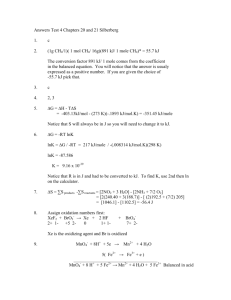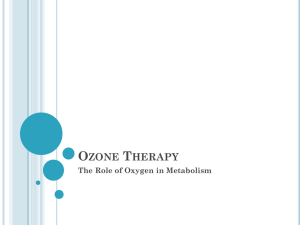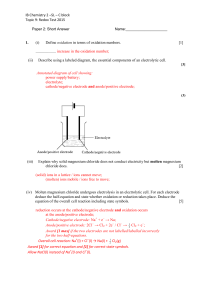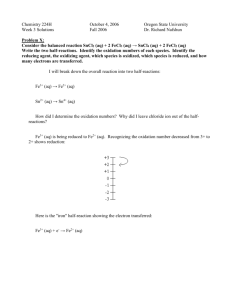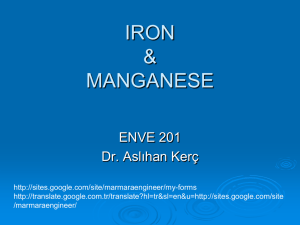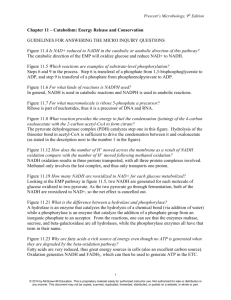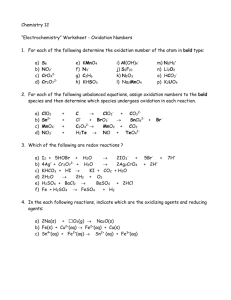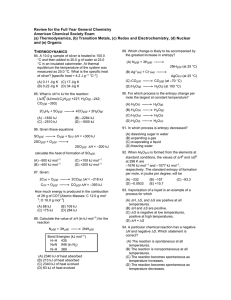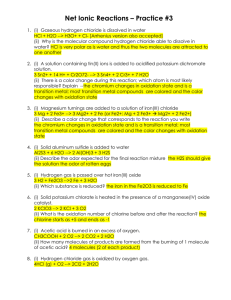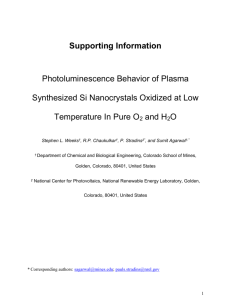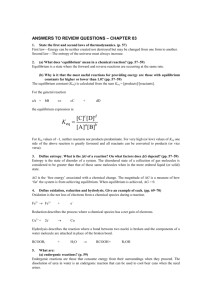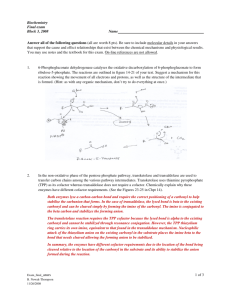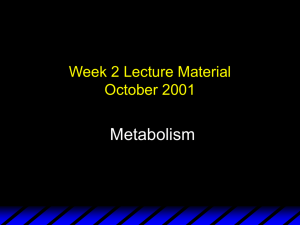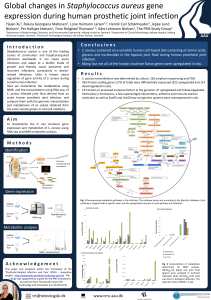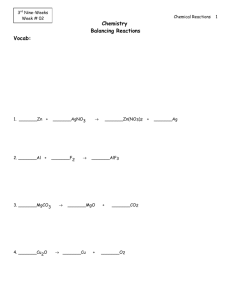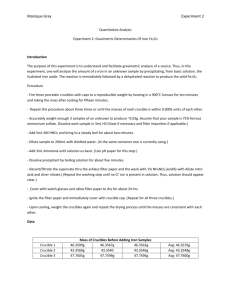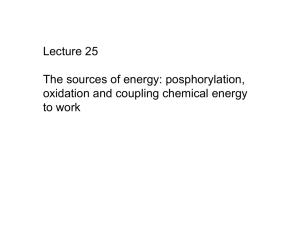Lecture 26
advertisement
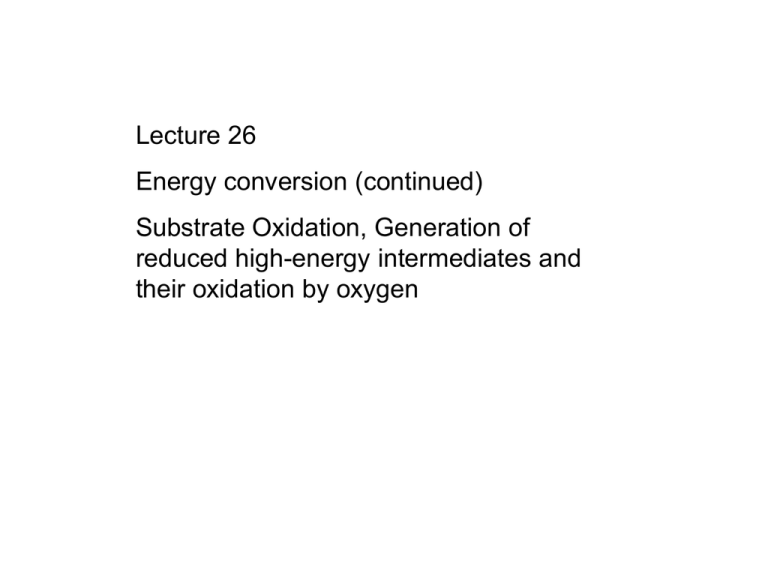
Lecture 26 Energy conversion (continued) Substrate Oxidation, Generation of reduced high-energy intermediates and their oxidation by oxygen http://www.microscopyu.com/galleries/fluorescence/cells/hela/hela.html Why oxygen? Electron re-distribution from less electronegative to more electronegative atoms occurs with massive energy release: Electronegativity of common elements: H < C < S < N < O …Cl < F Identify the substance and the reduction state of the first carbon (red) Enthalpies of oxidation (combustion) hydrogen (MW 2) H2 + ½O2 → H2O methane (MW 16) CH4 + 3O2 → CO2 + 2H2O glucose (MW 180.2) C6H12O6 + 6O2 → 6CO2 + 6H2O palmitic acid (MW 256.4) C16H32O2 + 31O2 – 16CO2 + 16H2O -286 kJ/mol (-68.4 kCal/mol) -891 kJ/mol (213) -2840 kJ/mol (-680) - 9730 kJ/mol (-2328) Compare caloric capacities of the substrates Oxidation-reduction (Red-ox) reactions usually lead to redistribution of electron densities or complete transfer of electrons resulting in change of ionization state. Fe2+ + Cu2+ → Fe3+ + Cu+ or in the form of half-reactions: Fe2+ → Fe3+ + e Cu2+ + e → Cu+ In biological systems oxidation is often coupled to dehydrogenation. 1. Direct transfer of electrons 2. As a transfer of H atoms or removal of H atoms coupled to production of H+ 3. As a Hydride ion :H– 4. Through direct combination with oxygen R-CH3 + (½)O2 → R-CH2-OH Reduction potentials for mixtures of reductant/oxidant (hlfreaction potentials) are measured using the standard hydrogen electrode RT [electron acceptor] o E E ln nF [electron donor] 2H+ + 2e → H2 Mg2+ + 2e → Mg (metal) http://www.chemguide.co.uk/physical/redoxeqia/eomgdiag.gif Standard Reduction potentials for some half-reactions, Volt ½ O2 + 2H+ + 2e → H2O +0.816 Fe3+ + e → Fe2+ +0.771 Cytochrome c (Fe3+) + e → Cytochrome c (Fe2+) +0.254 Fumarate2- +2H+ + 2e → succinate2- +0.031 2H+ + 2e → H2 0 (standard condition, condition) pH0) Pyruvate + 2H+ + 2e → lactate -0.185 FAD + 2H+ + 2e → FADH2 -0.219 S + 2H+ + 2e → H2S -0.243 NAD+ + H+ + 2e → NADH -0.320 NADP+ + H+ + 2e → NADPH -0.324 α-ketoglutarate + CO2 + 2H+ + 2e → isocytrate -0.38 2H+ + 2e → H2 -0.414 (pH 7) NADH + H+ + ½ O2 → NAD+ + H2O NAD+ + H+ + 2e → NAD -0.320 V ½ O2 + 2H+ + 2e → H2O +0.816 V total difference DG = -nFEo = -220 kJ/mol 1.14 V Stage 1 (in the cytosol) NAD NAD+ + H+ +2e- NADH half reaction (-0.32 V) FAD has smaller reducing potential (-0.219 V) so its reduction can be coupled to a less energetically favorable oxidation reaction Beta-Oxidation of fatty acids R= CH3-(CH2)n- R= CH3-(CH2)n-2- When succinate and oxygen are given to mitochondria, they release H+ Electron transport chain Complex I II III IV Energy released in forming water is stored as a PMF Energy is divided into smaller units ~10-12 protons per water molecule Iron-sulfur cluster (Fe-S) Heme CoQ accepts both electrons and protons Why add valinomycin? What conditions are necessary for the experiment to work? -poorly-buffered medium -Valinomycin/potassium -A substrate…NOT NADH…as stated in your book Is ATP synthesis the reason for the pH returning to the original value?... Oxidation rate is slow Why? Oxidation rate is fast Why?
